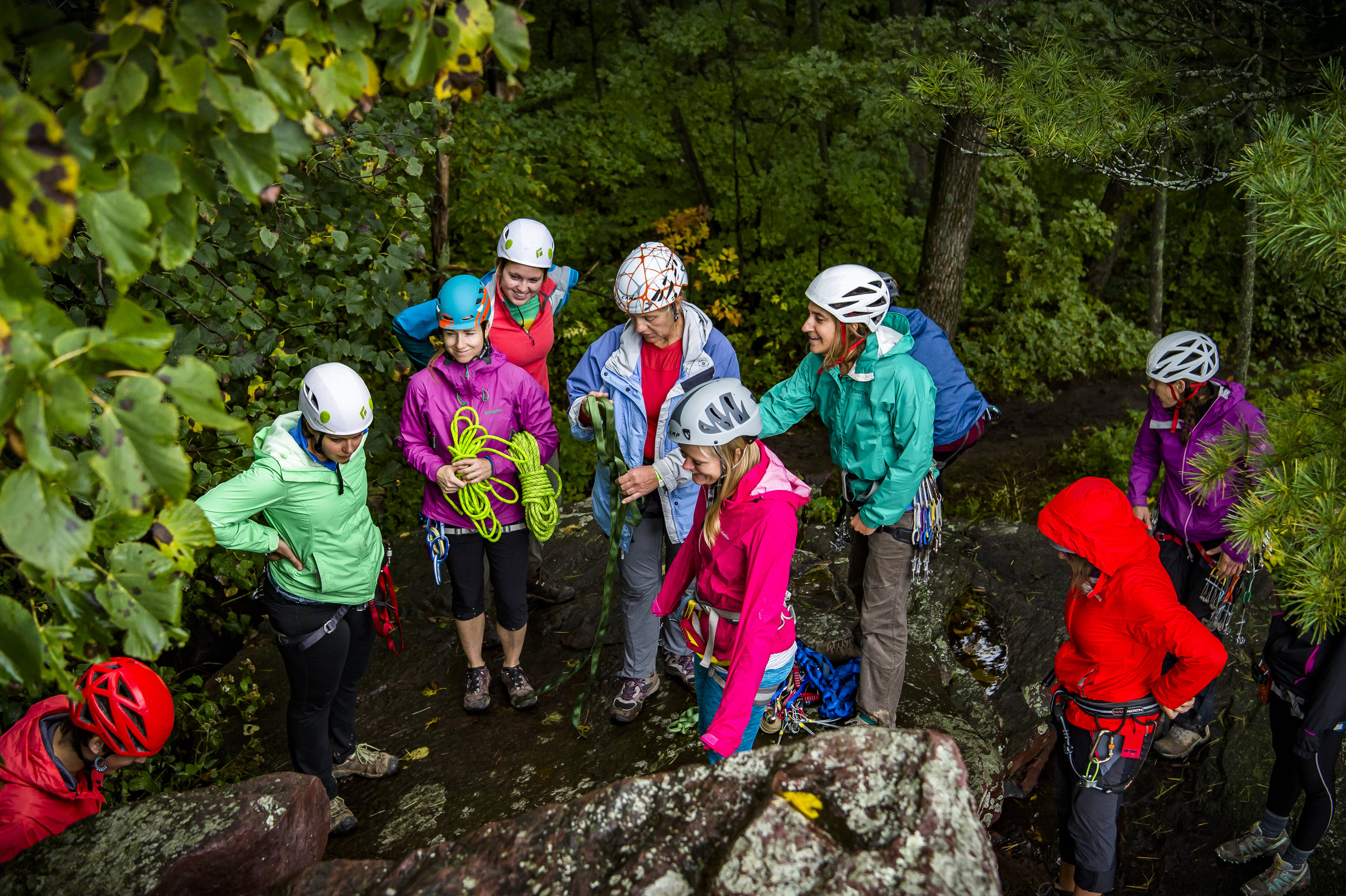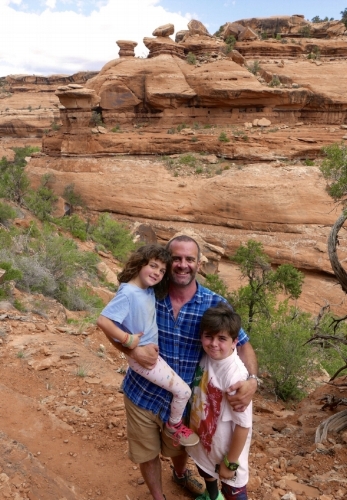Photo by Matt Jenkins of Research Grant recipient Kate McHugh.
We're proud to announce the recipients of the 2017 Research Grants.
Our Research Grants program supports scientific endeavors in mountain environments around the world. As climbers, we have a responsibility to understand how our outdoor resources are being affected in changing world. Part of the AAC’s mission is to respect and support the areas we enjoy, one of the most important ways to do that is by funding research to better understand such environments.
May 1, 2017, Golden, CO—The American Alpine Club (AAC) is proud to announce the recipients of the 2017 Research Grants, powered by the Alliance for Sustainable Energy and supported by the following endowments: Lara-Karena Bitenieks Kellogg Memorial Fund, Scott Fischer Memorial Fund, Arthur K. Gilkey Memorial Fund and the Bedayn Research Fund. The AAC Research Grants program supports scientific endeavors in mountain environments around the world. As climbers, we have a responsibility to understand how our outdoor resources are being affected in changing world. Part of the AAC’s mission is to respect and support the areas we enjoy, one of the most important ways to do that is by funding research to better understand such environments.
A big thanks to our corporate partners and to our Research Grant Committee members (listed below). Congratulations to our 2017 Research Grant recipients:
Kate McHugh – $1,500
Wilderness Rock Climbing Indicators and Climbing Management Implications in the National Park System, Grand Canyon National Park and Joshua Tree National Park
Kate McHugh is pursuing a Masters in Applied Geospatial Analysis, Geography, Planning, and Recreation at the University of Arizona. She is conducting a study that will determine what variables or indicators should be monitored and measured for climbing management strategies in National Park Service wilderness.
Cristian Rios – $1,000
Ecology and conservation of Polylepis ecosystem and its bird community, Peru
Cristian Rios is a Peruvian Ph.D. student at Cornell University in Conservation Science, entering his fourth year of field work. He is investigating the possible link of habitat loss and habitat fragmentation to the population declines of several threatened bird species in the Polylepsis forests of Huascaran National Park.
Rebecca Finger – $1,000
Limits to shrub expansion in a warmer Arctic, Greenland
Rebecca Finger is a Ph.D. student and NSF Fellow in Ecology at Dartmouth. She is examining the response of shrubs in the Arctic tundra to global warming and its effect on the permafrost over the past 50 years. In addition to conducting research, she will spend some of her time in Greenland helping teach and mentor local high school youth.
Kaitlyn Hanley – $1,000
The persistence of American pika in the Greater Yellowstone Region under a warmer future climate, Montana and Wyoming
Kaitlyn Hanley is a Masters student in Biological Sciences at Clemson. She is investigating both how and why pikas are surviving at lower elevations than previously reported in the Greater Yellowstone Ecosystem.
Nathalie Chardon – $750
Disturbance impacts on alpine plant populations at elevational and climatic limits, Colorado
Nathalie Chardon is a Ph.D. candidate in Environmental Studies at University of Colorado, Boulder. She is researching human impacts on biodiversity competition at limits of moss campion’s range, (e.g. hiker disturbance and trampling, and how effects change with elevation).
Chris Cosgrove – $750
Open-source automated weather stations for wireless sensor networks in high altitude/latitude environments, Oregon and Alaska
Chris Cosgrove is a 1st year Ph.D. student at Oregon State University’s Mountain Hydroclimatology group. He is developing and testing a prototype open-source automated weather station that will be integrated into a long-range wireless sensor network. If successful, it should be robust enough to endure winter-long deployment in a remote backcountry site.
Jess Gilbert – $500
Assessing the impact of anthropogenic activities on high altitude biodiversity in Huascaran National Park, Peru
Jess Gilbert is a Ph.D. student in the Department of Wildlife and Fisheries Sciences at Texas A&M University. She is exploring the spatial use of habitat by mammalian carnivores in both ‘pristine’ environments and areas affected by livestock grazing or tourism activities in Huascaran National Park, Peru.
Emily Schultz – $500
The importance of within-patch heterogeneity for metapopulation dynamics of a high elevation pine, Oregon
Emily Shultz is a Ph.D. candidate and NSF fellow in the Department of Ecology and Evolutionary Biology at Rice University. She is developing models predicting the heterogeneity of whitebark pine and impact of heterogeneity on resilience. This research elevates the predictive analysis possible for metapopulations of the endangered conifer.
Win McLaughlin – $500
Initiation and timing of uplift of the Tien Shan, Kyrgyzstan
Win McLaughlin is a Ph.D. candidate in the Department of Geological Sciences at the University of Oregon. He will conduct field work to collect and compare fossils and rock cores from two basins in the Tien Shan mountains of Kyrgyzstan to constrain the timing and rate of their uplift.
Anya Tyson – $500
The Clark’s Nutcracker Citizen Science Project: Engaging young adventurers in research and conservation, Wyoming
Anya Tyson is a Masters student in the Conservation Ecology and Field Naturalist Program at University of Vermont and the coordinator of the Clark’s Nutcracker Citizen Science Project. She is an active science communicator who specializes in training instructors from NOLS, Teton Science Schools, and other organizations on how to educate their students about the whitebark pine ecosystem.
Daniel Winkler – $500
Biodiversity collapse: how a keystone species mediates biodiversity of Ecuadorian alpine areas responding to climate change, Ecuador
Daniel Winkler is a Ph.D. candidate in Ecology and Evolutionary Biology at University of California, Irvine. He is conducting research to test if climate change-induced range shifts of the vulnerable X. rigidum (a keystone nurse plant species) have occurred on the dry western slopes in the rain shadow of Mount Chimborazo, Ecuador.
Alison Criscitiello – $500
Histories of Arctic climate and environmental contaminants from a shallow ice core, Grant Ice Cap, Ellesmere Island, Canada
Alison Criscitiello is a post-doctoral researcher in the Cryosphere Climate Research Group at the University of Calgary, Canada and the Technical Director of the Canadian Ice Core Archive at the University of Alberta. Her research focuses on reconstructing climate and sea ice histories of the Arctic Ocean, as well as examining the presence of pollutants through time.
Rachael Mallon – $500
Phylogeography of Snow Algae Communities in the Pacific Northwest, California, Oregon, Washington
Rachael Mallon is a Masters student in Biology at Western Washington University. She is investigating the effects of snow algae on accelerating melting of snow pack in the Western United States from the Sierra Nevada through the Cascade Range.
Peter Billman – $250
Understanding how changing snowpacks and water availability affect patterns of distributional change in the American pika
Peter Billman is beginning a Ph.D. program at Montana State University. He is investigating the effects of water-availability on the windward (west-facing) and leeward (east-facing) sides in several mountain ranges on the location and distribution of the American pika.
AAC Research Grant Selection Committee
Sarah Vail, Committee Chair
Danika Gilbert
Louis Reichardt
Matt Hepp
Katie Rose Fischer-Price
With support from: Maria Povec, Research Grant Coordinator, AAC staff and Jonathan Oulton, AAC Policy Program intern

























